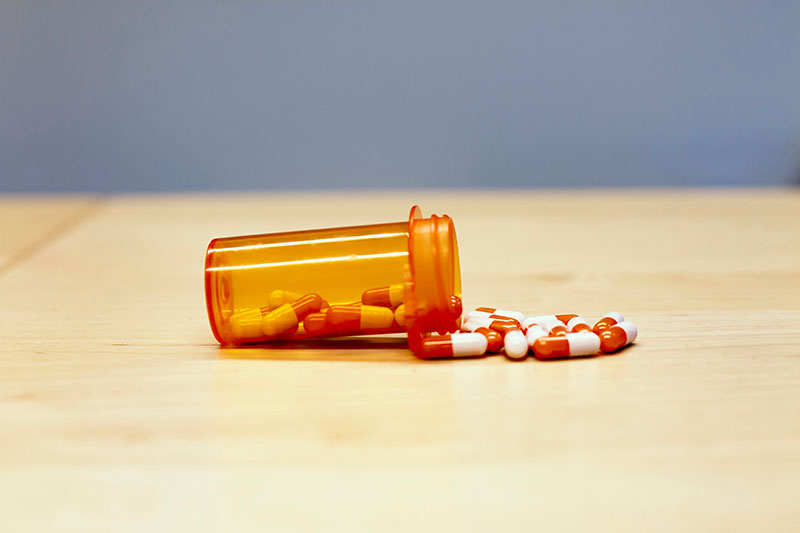
Stimulant medications are an effective treatment for Attention-Deficit/Hyperactivity Disorder (ADHD). In the classroom, parents and teachers say that medications like methylphenidate (MPH) can reduce symptoms and improve behavior
Although stimulants have been in use for decades to treat ADHD in school-aged children, just how they work hasn’t been clear. But the results of a new study in The Journal of Child Psychology and Psychiatry is filling in critical gaps about the role of improved cognitive functions.
“This is the first study to demonstrate that improving short-term working memory and the ability to inhibit are at least part of the way that stimulants work and improve outcomes for ADHD in the classroom,” says Larry Hawk, a professor in UB’s Department of Psychology and the paper’s lead author.
Knowing how frontline treatments like MPH work can help develop better treatments, both pharmacological and behavioral, that target certain mechanisms and processes or contribute to developing equally effective pharmacotherapies with fewer side effects than those currently in use.
“It’s estimated that it takes 15 to 20 years to go from animal research to an approved medication, at a cost of roughly $500 million to $2 billion,” says Hawk. “Knowing how one treatment works gives us clues about what to target in developing new treatments. That can save a lot of time, energy and money.”
Hawk says researchers often have a good hypothesis to explain the efficacy of certain medications, but for many treatments, their workings remain a mystery.
In the case of stimulant treatment of ADHD, improved classroom behavior and seatwork completion are well-documented clinical benefits. There’s also laboratory evidence that stimulants improve a wide range of cognitive processes, including working memory (holding and manipulating information in your mind), the ability to inhibit (such as remembering to raise your hand rather than shout out an answer) and sustained attention (staying on task for long periods of time), key problem areas for many school-aged children with ADHD, according to Hawk.
These separate lines of evidence from clinical and laboratory science suggest that MPH works through those basic cognitive processes.
“But you really haven’t demonstrated that,” says Hawk. “It’s just a pattern of association.”
To provide a more definitive test of the idea, the researchers combined the clinical and laboratory worlds to examine basic cognition and clinical outcomes in the same children at the same time. In small groups over three summers, the study’s 82 children ages 9-12 completed a one-week summer program. The children completed a range of activities, including sports and games, arts and crafts, three math classes, and computerized assessments of their cognitive abilities.
On each day, each child received either placebo or a low or moderate dose of stimulant medication. The researchers looked at how well children’s response to medication on the cognitive tasks accounted for how much the medication improved their classroom behavior and number of math problems solved.
“The results provide the strongest evidence to date that stimulants like methylphenidate improve classroom behavior and performance by enhancing specific cognitive processes. Specifically, the more medication helped kids hold and manipulate information in working memory (like being able to remember things in reverse order) and the more it helped children inhibit responses ‘on the fly’, the greater the classroom benefit. These data are the strongest yet to suggest those are the mechanisms by which the medication is working,” says Hawk.
When discussing how the findings might contribute to new treatments, Hawk points out that this work could guide the search for novel medications. He also notes that some of the best ways to improve basic cognitive processes likely do not involve medication.
“Behavioral treatment and parent training may strengthen these cognitive processes indirectly,” he says. “Both can be used to enhance executive function – and behavior – by systematically and gradually reinforcing greater and greater self-control. Whether that is how these treatments work, or whether they would work even better if they directly targeted working memory and inhibition, remains to be seen.”
Hawk says he’d like to extend this line of work to the real-world classroom setting or even outside of school with homework completion and peer interaction.
“This is one of two pieces of research that I feel most proud of in my career,” says Hawk. “It takes a lot to walk in both the clinical and the basic science worlds. But when we put them together the way our team did here, we can really break new ground.
“I hope that we and others are now able to take those next steps and turn these novel findings into even more practical outcomes for families.”
SOURCE: University at Buffalo
Filed Under: Neurological Disease



